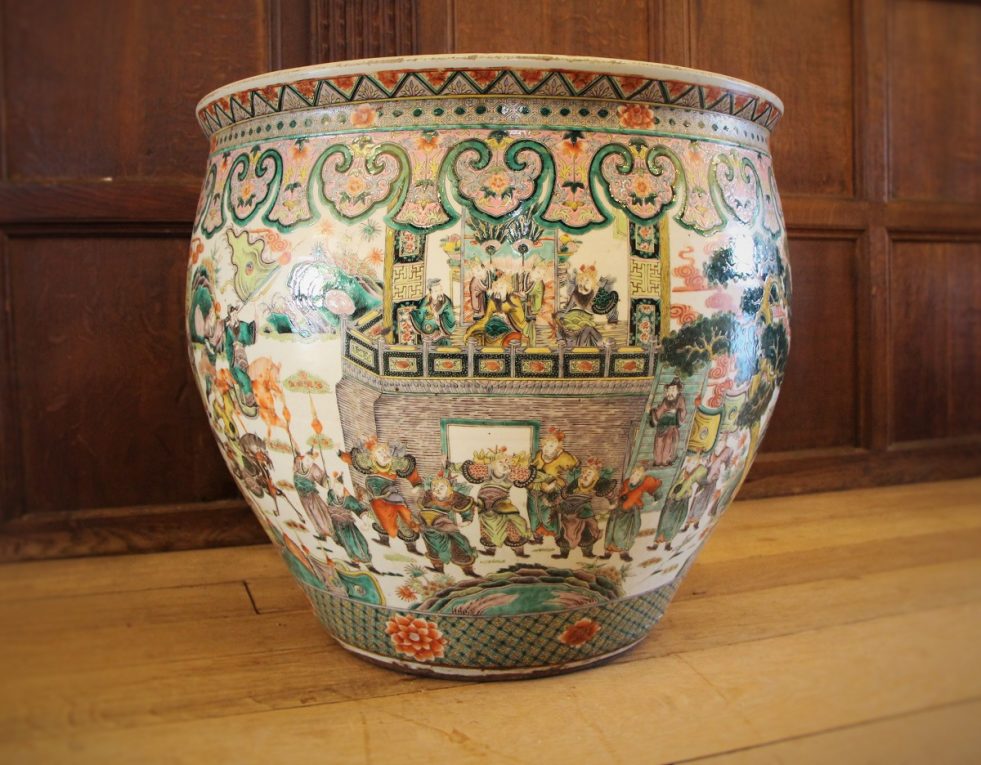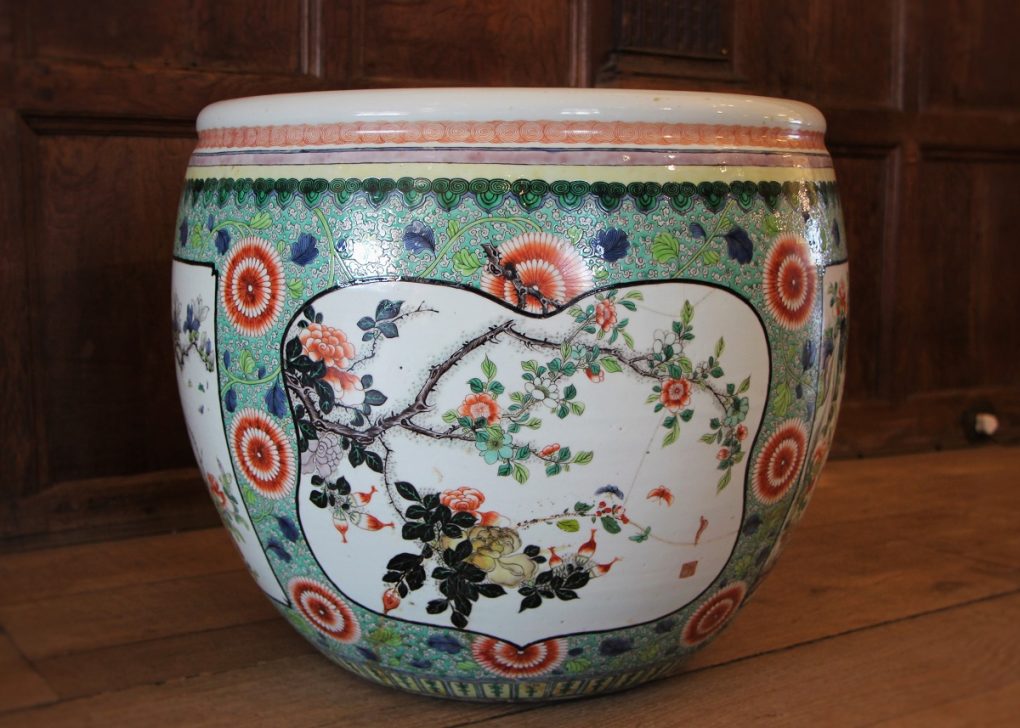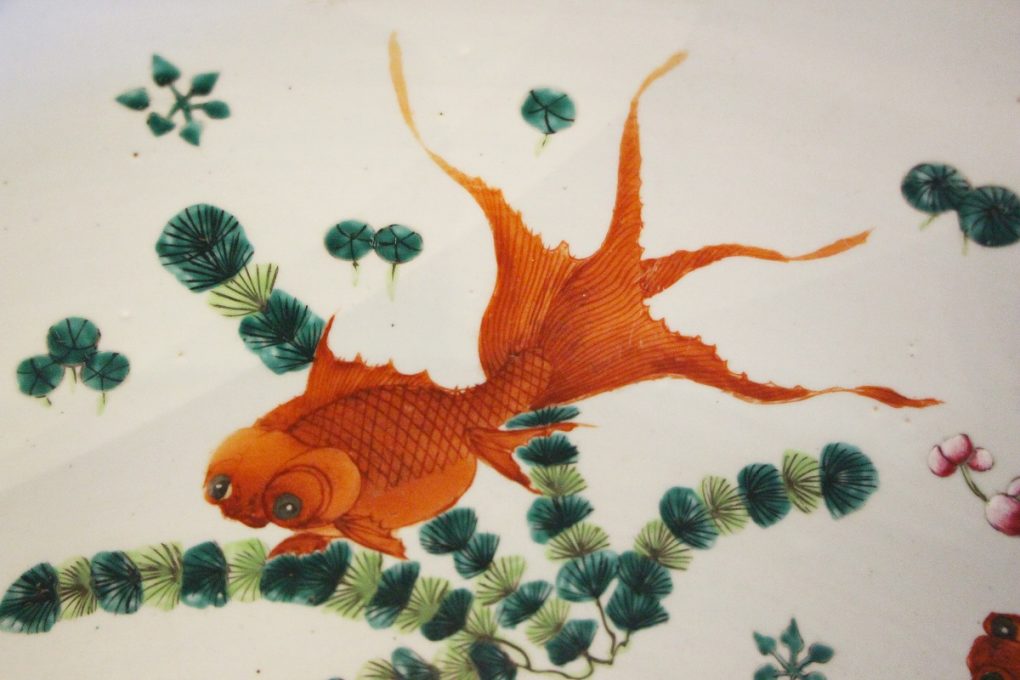

Castle Object of the Month is our collection of Jardinières.
At Hever Castle we have 7 large bowls and 2 smaller ones in total. The two smaller Jardinières would have been used as flower pots, whilst the larger ones were generally used as fish bowls.
The designs of the Jardinières are made by drawing a sketch on the shaped clay, which is then covered with ‘glassy white’ (bo li bai), an opaque white enamel (lead arsenate), and painted in detail with the mixture of pigment and oil, before firing.
The fish bowl originates from the Romans and regained popularity from 1300AD in China; as the Chinese were domesticating, breeding and designing new varieties of goldfish. The fish would generally have been kept in large ponds, but when the host had visitors or if it was a special occasion they would have taken the goldfish out of the pond, and put them in the Jardinière bowls to display a living decoration. Especially popular in the 1800s, these bowls turned into glass ones and having a gold fish in your house became a common decoration.

The collection of Jardinières at Hever Castle consists of: 1 in simple blue and white. 4 large bowls are in the Famille-vert style; which was adopted in the Kangxi period (1662-1722), and uses green and iron red with other over glaze colours. 1 large jardinière and the 2 small ones are in the Famille rose style; (also known as fencai or ruan cai, meaning ‘soft colours’, and later as yang cai, meaning ‘foreign colours’) was introduced during the reign of Kangxi (1654-1722), possibly around 1720. It used mainly pink or purple and remained popular throughout the 18th and the 19th centuries. Famille rose enamel ware allows a greater range of colour and tone than was previously possible, enabling the depiction of more complex images, including flowers, figures and insects.
Our Jardinières date back to the 19th century and would have been made in China for the European market. Former owner Lord Astor collected such items and that’s how they came to live at the Castle, though it is unlikely that Astor himself would have kept goldfish in them!
You can find the large Jardinières in the Long Gallery and the smaller two bowls in the Library. Find out more on the fascinating history of the Castle’s artefacts.

Book your visit to Hever Castle & Gardens.
Within the grounds of the Hever Castle Estate, there are two opportunities for you to stay the night with us.
Hever Castle has played host to many important events and celebrations for over 600 years. In 1903 when William Waldorf Astor set about restoring Hever Castle to its former glory, he added the Astor Wing, to accommodate his family and guests, before creating a lake and the spectacular Italian Garden to house his impressive collection of ancient Greek and Roman statuary.
There are multiple places to eat & drink across the Hever Castle Estate. Select between the Castle & Gardens and Golf Club below to discover more.
Set in the mature grounds of the Hever Castle Estate, Hever Castle Golf Club is a 27 hole Kent golf course that will encourage and inspire all golf enthusiasts.
Set in the mature grounds of the Hever Castle Estate, the Wellbeing Centre consists of five smart treatment rooms.